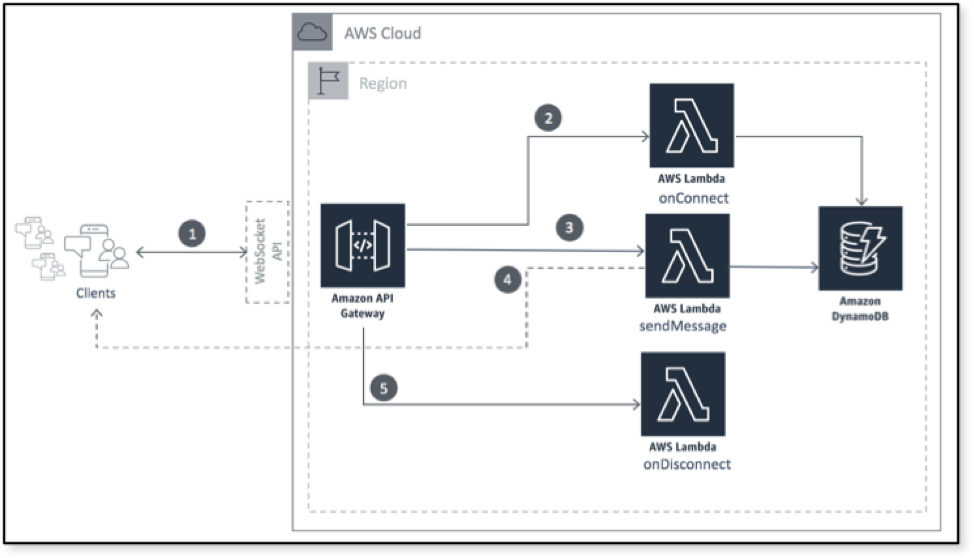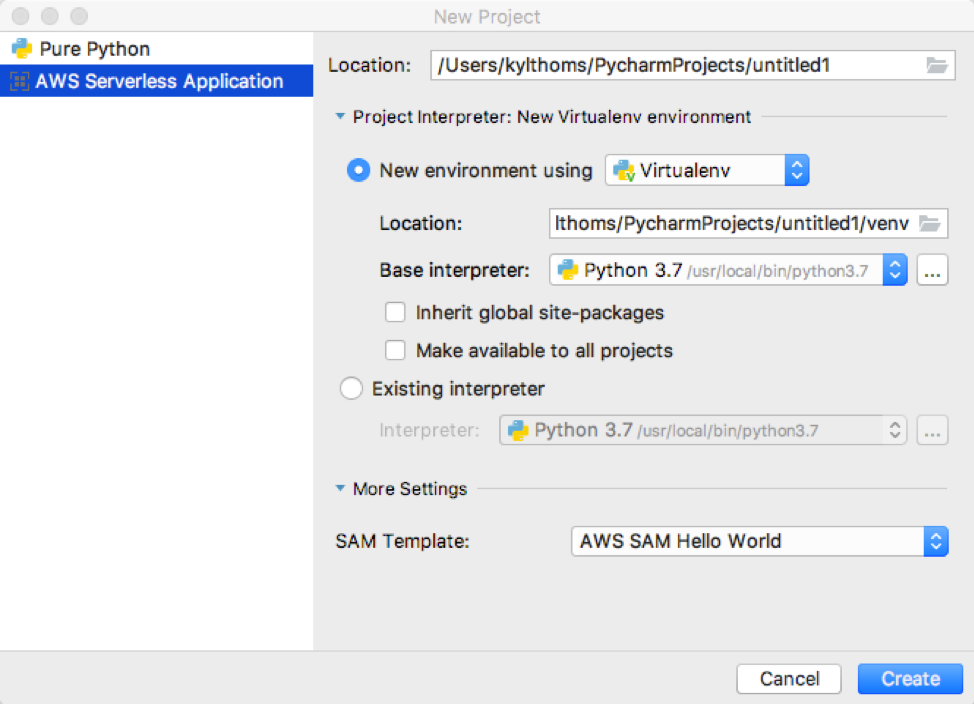AWS Compute Blog
ICYMI: Serverless Q4 2018
This post is courtesy of Eric Johnson, Senior Developer Advocate – AWS Serverless
Welcome to the fourth edition of the AWS Serverless ICYMI (in case you missed it) quarterly recap. Every quarter, we share all of the most recent product launches, feature enhancements, blog posts, webinars, Twitch live streams, and other interesting things that you might have missed!
This edition of ICYMI includes all announcements from AWS re:Invent 2018!
If you didn’t see them, check our Q1 ICYMI, Q2 ICYMI, and Q3 ICYMI posts for what happened then.

So, what might you have missed this past quarter? Here’s the recap.
New features

AWS Lambda introduced the Lambda runtime API and Lambda layers, which enable developers to bring their own runtime and share common code across Lambda functions. With the release of the runtime API, we can now support runtimes from AWS partners such as the PHP runtime from Stackery and the Erlang and Elixir runtimes from Alert Logic. Using layers, partners such as Datadog and Twistlock have also simplified the process of using their Lambda code libraries.
To meet the demand of larger Lambda payloads, Lambda doubled the payload size of asynchronous calls to 256 KB.
In early October, Lambda also lengthened the runtime limit by enabling Lambda functions that can run up to 15 minutes.
Lambda also rolled out native support for Ruby 2.5 and Python 3.7.
You can now process Amazon Kinesis streams up to 68% faster with AWS Lambda support for Kinesis Data Streams enhanced fan-out and HTTP/2 for faster streaming.
Lambda also released a new Application view in the console. It’s a high-level view of all of the resources in your application. It also gives you a quick view of deployment status with the ability to view service metrics and custom dashboards.

Application Load Balancers added support for targeting Lambda functions. ALBs can provide a simple HTTP/S front end to Lambda functions. ALB features such as host- and path-based routing are supported to allow flexibility in triggering Lambda functions.
Amazon API Gateway added support for AWS WAF. You can use AWS WAF for your Amazon API Gateway APIs to protect from attacks such as SQL injection and cross-site scripting (XSS).
API Gateway has also improved parameter support by adding support for multi-value parameters. You can now pass multiple values for the same key in the header and query string when calling the API. Returning multiple headers with the same name in the API response is also supported. For example, you can send multiple Set-Cookie headers.
In October, API Gateway relaunched the Serverless Developer Portal. It provides a catalog of published APIs and associated documentation that enable self-service discovery and onboarding. You can customize it for branding through either custom domain names or logo/styling updates. In November, we made it easier to launch the developer portal from the Serverless Application Repository.
In the continuous effort to decrease customer costs, API Gateway introduced tiered pricing. The tiered pricing model allows the cost of API Gateway at scale with an API Requests price as low as $1.51 per million requests at the highest tier.
Last but definitely not least, API Gateway released support for WebSocket APIs in mid-December as a final holiday gift. With this new feature, developers can build bidirectional communication applications without having to provision and manage any servers. This has been a long-awaited and highly anticipated announcement for the serverless community.
AWS Step Functions added eight new service integrations. With this release, the steps of your workflow can exist on Amazon ECS, AWS Fargate, Amazon DynamoDB, Amazon SNS, Amazon SQS, AWS Batch, AWS Glue, and Amazon SageMaker. This is in addition to the services that Step Functions already supports: AWS Lambda and Amazon EC2.
Step Functions expanded by announcing availability in the EU (Paris) and South America (São Paulo) Regions.
The AWS Serverless Application Repository increased its functionality by supporting more resources in the repository. The Serverless Application Repository now supports Application Auto Scaling, Amazon Athena, AWS AppSync, AWS Certificate Manager, Amazon CloudFront, AWS CodeBuild, AWS CodePipeline, AWS Glue, AWS dentity and Access Management, Amazon SNS, Amazon SQS, AWS Systems Manager, and AWS Step Functions.
The Serverless Application Repository also released support for nested applications. Nested applications enable you to build highly sophisticated serverless architectures by reusing services that are independently authored and maintained but easily composed using AWS SAM and the Serverless Application Repository.
AWS SAM made authorization simpler by introducing SAM support for authorizers. Enabling authorization for your APIs is as simple as defining an Amazon Cognito user pool or an API Gateway Lambda authorizer as a property of your API in your SAM template.
AWS SAM CLI introduced two new commands. First, you can now build locally with the sam build command. This functionality allows you to compile deployment artifacts for Lambda functions written in Python. Second, the sam publish command allows you to publish your SAM application to the Serverless Application Repository.
Our SAM tooling team also released the AWS Toolkit for PyCharm, which provides an integrated experience for developing serverless applications in Python.
The AWS Toolkits for Visual Studio Code (Developer Preview) and IntelliJ (Developer Preview) are still in active development and will include similar features when they become generally available.
AWS SAM and the AWS SAM CLI implemented support for Lambda layers. Using a SAM template, you can manage your layers, and using the AWS SAM CLI, you can develop and debug Lambda functions that are dependent on layers.
Amazon DynamoDB added support for transactions, allowing developer to enforce all-or-nothing operations. In addition to transaction support, Amazon DynamoDB Accelerator also added support for DynamoDB transactions.
Amazon DynamoDB also announced Amazon DynamoDB on-demand, a flexible new billing option for DynamoDB capable of serving thousands of requests per second without capacity planning. DynamoDB on-demand offers simple pay-per-request pricing for read and write requests so that you only pay for what you use, making it easy to balance costs and performance.
AWS Amplify released the Amplify Console, which is a continuous deployment and hosting service for modern web applications with serverless backends. Modern web applications include single-page app frameworks such as React, Angular, and Vue and static-site generators such as Jekyll, Hugo, and Gatsby.
Amazon SQS announced support for Amazon VPC Endpoints using PrivateLink.
Serverless blogs
October
- Implementing Serverless Video Subtitles
- Monitor tag changes on AWS resources with serverless workflows and Amazon CloudWatch Events
- Resolving circular dependency in provisioning of Amazon S3 buckets with AWS Lambda event notifications
- Create a security partition for your applications using AWS Service Catalog and AWS Lambda
November
- Overriding request/response parameters and response status in Amazon API Gateway
- Building a conversational business intelligence bot with Amazon Lex
- How to update AWS Service Catalog provisioned products to new product versions and report changes using AWS Step Functions, AWS Lambda, and Amazon Athena
- Introducing Firecracker, a New Virtualization Technology and Open Source Project for Running Multi-Tenant Container Workloads
- Introducing the New Amplify Console
December
- Building Simpler Genomics Workflows on AWS Step Functions
- Introducing the C++ Lambda Runtime
- Announcing Ruby build support for AWS SAM CLI
- AWS Serverless applications with multiple .NET Core projects
- Debugging .NET Core AWS Lambda functions using the AWS .NET Mock Lambda Test Tool
Tech talks
We hold several Serverless tech talks throughout the year, so look out for them in the Serverless section of the AWS Online Tech Talks page. Here are the three tech talks that we delivered in Q4:
- Building Real Time Applications using WebSocket APIs Supported by Amazon API Gateway
- What’s New with Serverless at AWS
- Serverless Workflows for the Enterprise
- Build Enterprise-Grade Serverless Apps
Twitch
We’ve been so busy livestreaming on Twitch that you’re most certainly missing out if you aren’t following along!
- Recap of the re:Invent Keynote of Dr. Werner Vogels, CTO of Amazon.com (lots of serverless goodness here!)
- AWS Serverless Launches
- Firecracker is now Open Source
For information about upcoming broadcasts and recent livestreams, keep an eye on AWS on Twitch for more Serverless videos and on the Join us on Twitch AWS page.
New Home for SAM Docs
This quarter, we moved all SAM docs to https://docs.thinkwithwp.com/serverless-application-model. Everything you need to know about SAM is there. If you don’t find what you’re looking for, let us know!
In other news
The schedule is out for 2019 AWS Global Summits in cities around the world. AWS Global Summits are free events that bring the cloud computing community together to connect, collaborate, and learn about AWS. Summits are held in major cities around the world. They attract technologists from all industries and skill levels who want to discover how AWS can help them innovate quickly and deliver flexible, reliable solutions at scale. Get notified when to register and learn more at the AWS Global Summits website.
Still looking for more?
The Serverless landing page has lots of information. The resources page contains case studies, webinars, whitepapers, customer stories, reference architectures, and even more Getting Started tutorials. Check it out!
